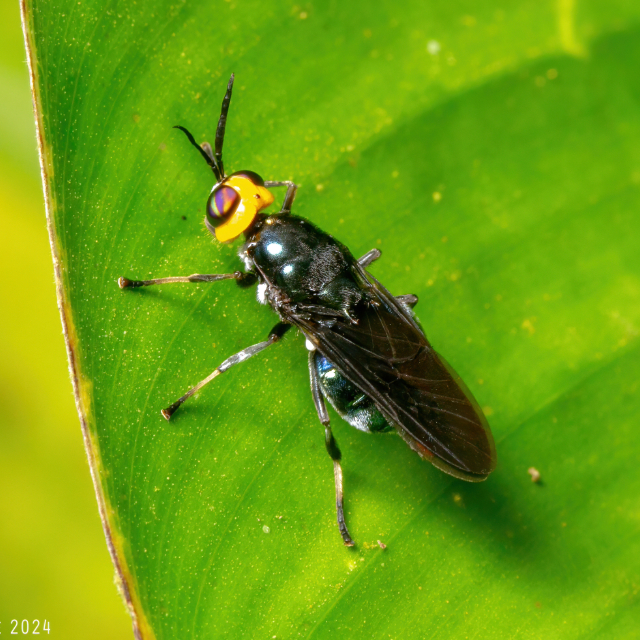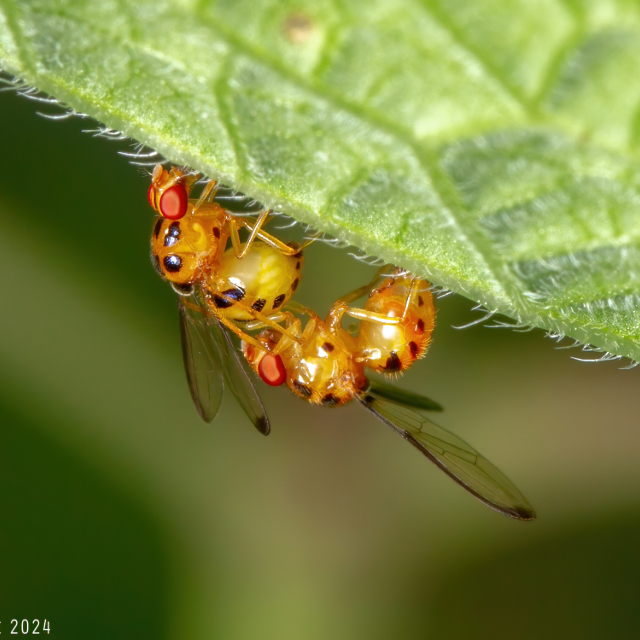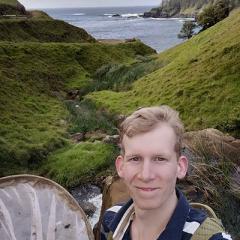In August I was lucky enough to travel to Costa Rica to participate in the third ever Fly School.
Organised by entomologists from the Natural History Museum of Los Angeles County, the course offers an opportunity for participants to rapidly enhance their skills in collecting and identifying insects belonging to the order Diptera – aka flies! When I saw that applications were open, I was very quick to jump at the opportunity. Spending time in one of the most biologically diverse regions of the world and learning about flies – what could be better? I was fortunate to receive a grant from the Dipterists Society, which greatly assisted with the travel costs of reaching Costa Rica, not an easy place to get to from Australia...
Class assembles
I left Brisbane on 28 July, and four flights and 30+ hours later, I finally arrived in San José, Costa Rica. I checked into my AirBnB and spent the rest of the day exploring. My DuoLingo-level Spanish made communication with the locals challenging at times, but I eventually managed to muddle my way through. After some successful birding in a small patch of rainforest behind the local WalMart, I checked into the hotel that would be the launching point for our trip the next day and then headed out for dinner to meet some of the other early arrivals.
On the morning of 1 August, the full Fly School class assembled. Around 30 students attended the course, most of them based in the Americas but a sizeable contingent had also travelled from Europe, Asia and Australasia. The diversity in the levels of entomological experience and research interests among the students, as well as the cultural diversity, was amazing, and it was fantastic to make so many new entomological friends. Like the students, the tutors came from diverse research backgrounds but all of them were leading experts in one or more areas of Diptera-related research. Matt Bertone was one of the instructors and a passionate photographer. He kindly made all his photos available to us and some of my favourites feature here.
After brief introductions, we loaded our bags on top of the buses and set off. Our destination, and home for the next 12 days, was the Soltis Centre, a research station owned by Texas A&M University. The centre is in San Juan de Peñas Blancas, San Ramón, about a 2.5-hour bus ride from San José and is set on 250 acres of beautiful rainforest. The accommodation and facilities were fantastic, with a large lodge that contained the dining room, and a nicely air-conditioned lab that would be our base for the next 12 days. The cabins had bunkbeds, with three or four course participants to a room. The ability to spend the morning hunting flies in the rainforest and then take a shower and retreat to the confines of the airconditioned lab during the heat of the day was a luxury not often experienced during fieldwork. Being immersed in the rainforest was incredible, and whenever we weren’t fly-focused, I made sure to get out to try and spot toucans, hummingbirds, sloths and other Central American wildlife.

Image credit: Matt Bertone
Rainforest, lectures and the lab
Over those 12 days, we cycled between fieldwork in the rainforest, lectures on all things Diptera and work in the lab pinning and identifying collected specimens. Most nights we were in the lab identifying flies until nearly midnight (out of choice), but this was broken up by short trips out to the UV light sheets to marvel at the diversity of insects that come out at night in the Costa Rican rainforest. Other highlights included a trip up a 30+ metre tower into the rainforest canopy and hikes to beautiful waterfalls. Spending time in the field learning the best methods of collecting flies was amazing, and the lectures were all highly informative and really helped to better grasp the diversity of flies, but it was in the lab work where I felt that the greatest learnings came!
In total, there are more than 130 fly families in the world, and so working out which family a given specimen belongs to is no easy task. The goal set for us by the course organisers was to successfully collect and identify at least 40 different families. We used dichotomous keys to identify specimens and discussed our IDs with our classmates, but it was the opportunity to have those IDs confirmed by world-leading experts and ask questions about where or why we might have gone wrong that was the most valuable aspect of the course.

in the family Somatiidae, only found in Central and South
America.
Image credit: Matt Bertone
New friends and the future
On the penultimate day, we submitted our collections for grading, where the experts ran through our specimens and made notes of any errors in our identifications, offering another valuable learning opportunity. The last day saw us pack our gear and head back to San José, where we were treated to a tour of the incredible insect collections in the museum. From there, everyone began to part ways. I spent the last two days of my trip travelling through some of Costa Rica’s beautiful national parks with some newfound friends before beginning the return journey to Australia.
Overall, the course was an incredible experience that I would highly recommend to anyone interested in upskilling in Diptera taxonomy. The opportunity to do an immersive entomology-focused deep dive like this is rare, and something I feel very lucky to have experienced. My PhD research attempts to integrate the disciplines of taxonomy and conservation (with a focus on flies and other insects), and so I have no doubt that the skills I have developed and the contacts I have made will serve me well now and for many years to come.
To keep up to date on our latest events, check out our Bluesky and LinkedIn.

